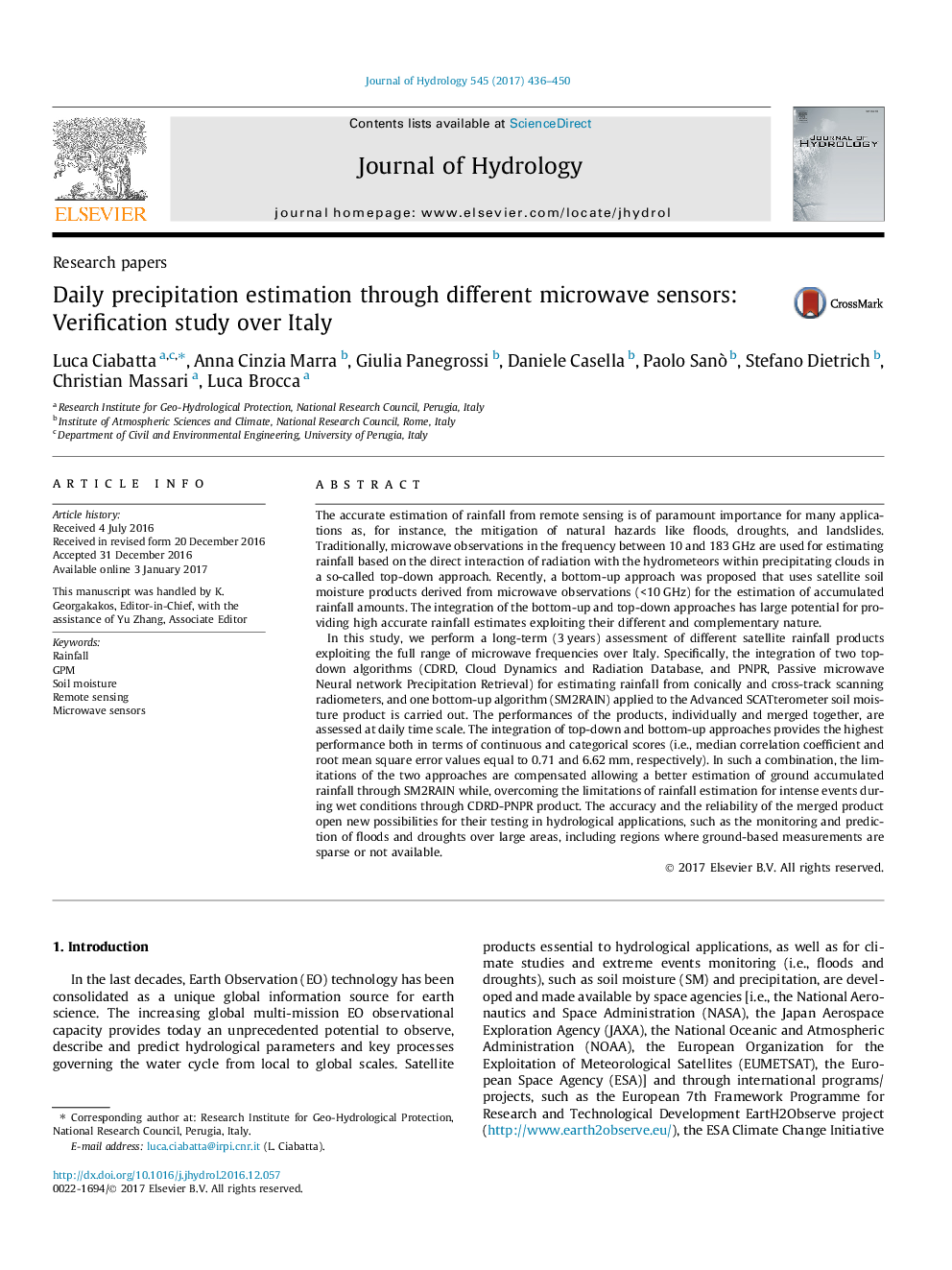| Article ID | Journal | Published Year | Pages | File Type |
|---|---|---|---|---|
| 5771414 | Journal of Hydrology | 2017 | 15 Pages |
â¢An accurate analysis of five satellite-based rainfall products over the Italian territory is proposed.â¢The impact of the temporal frequency of MW satellite overpasses on product performances is assessed.â¢MW-only rainfall products are found to provide accurate rainfall estimates.â¢The integration of soil moisture-based rainfall and state-of-the-art estimates provides a more reliable product.
The accurate estimation of rainfall from remote sensing is of paramount importance for many applications as, for instance, the mitigation of natural hazards like floods, droughts, and landslides. Traditionally, microwave observations in the frequency between 10 and 183Â GHz are used for estimating rainfall based on the direct interaction of radiation with the hydrometeors within precipitating clouds in a so-called top-down approach. Recently, a bottom-up approach was proposed that uses satellite soil moisture products derived from microwave observations (<10Â GHz) for the estimation of accumulated rainfall amounts. The integration of the bottom-up and top-down approaches has large potential for providing high accurate rainfall estimates exploiting their different and complementary nature.In this study, we perform a long-term (3Â years) assessment of different satellite rainfall products exploiting the full range of microwave frequencies over Italy. Specifically, the integration of two top-down algorithms (CDRD, Cloud Dynamics and Radiation Database, and PNPR, Passive microwave Neural network Precipitation Retrieval) for estimating rainfall from conically and cross-track scanning radiometers, and one bottom-up algorithm (SM2RAIN) applied to the Advanced SCATterometer soil moisture product is carried out. The performances of the products, individually and merged together, are assessed at daily time scale. The integration of top-down and bottom-up approaches provides the highest performance both in terms of continuous and categorical scores (i.e., median correlation coefficient and root mean square error values equal to 0.71 and 6.62Â mm, respectively). In such a combination, the limitations of the two approaches are compensated allowing a better estimation of ground accumulated rainfall through SM2RAIN while, overcoming the limitations of rainfall estimation for intense events during wet conditions through CDRD-PNPR product. The accuracy and the reliability of the merged product open new possibilities for their testing in hydrological applications, such as the monitoring and prediction of floods and droughts over large areas, including regions where ground-based measurements are sparse or not available.
